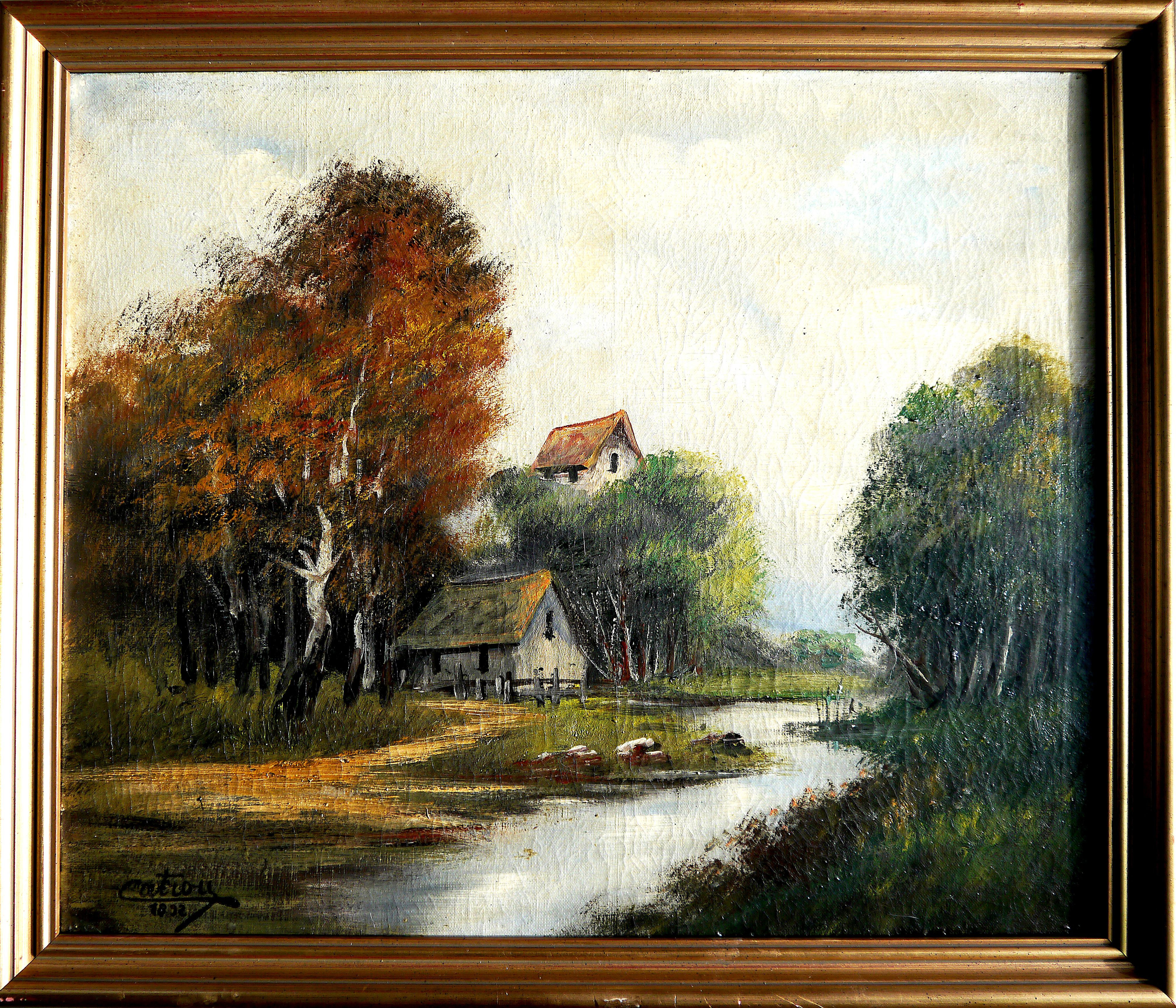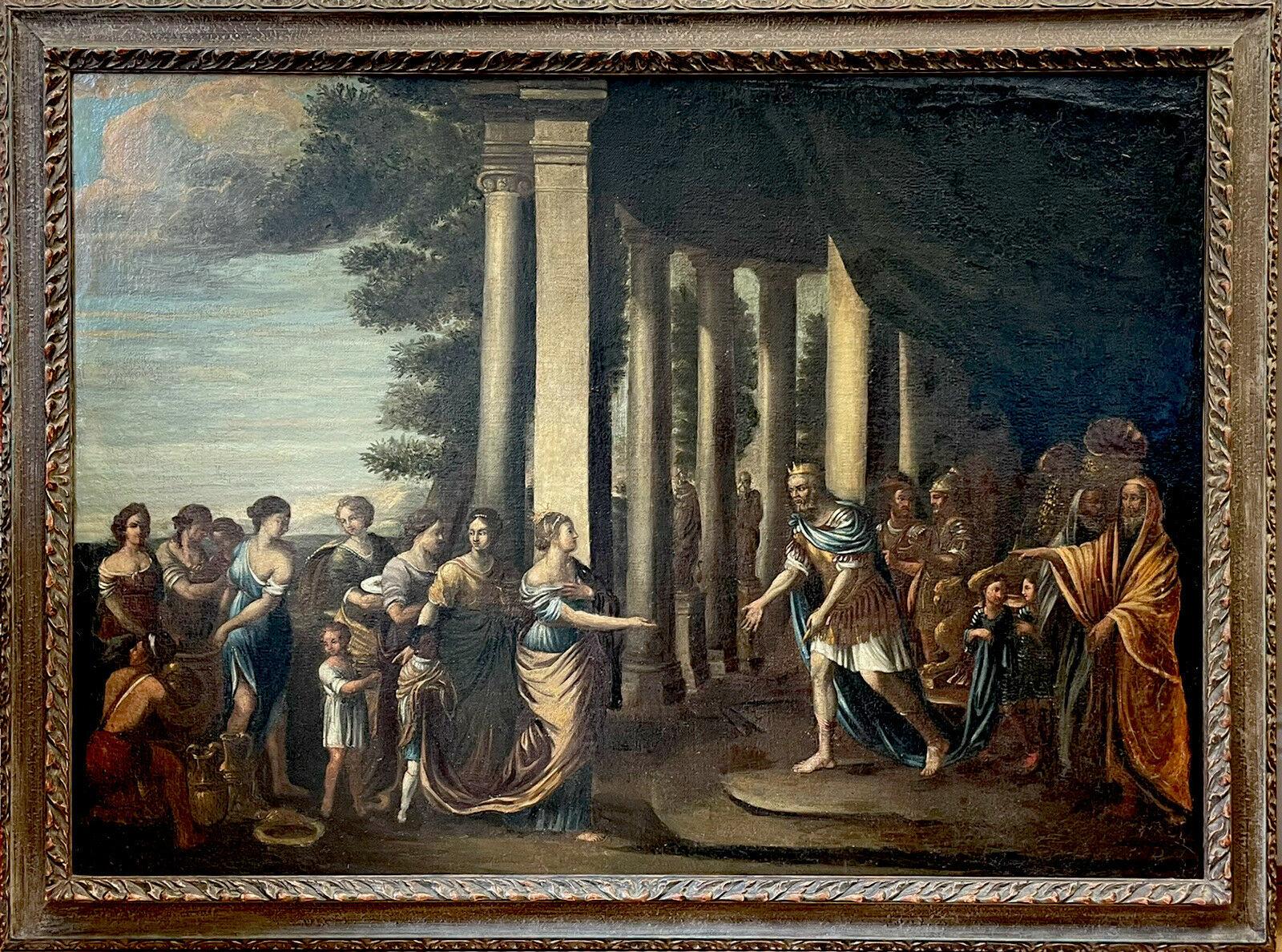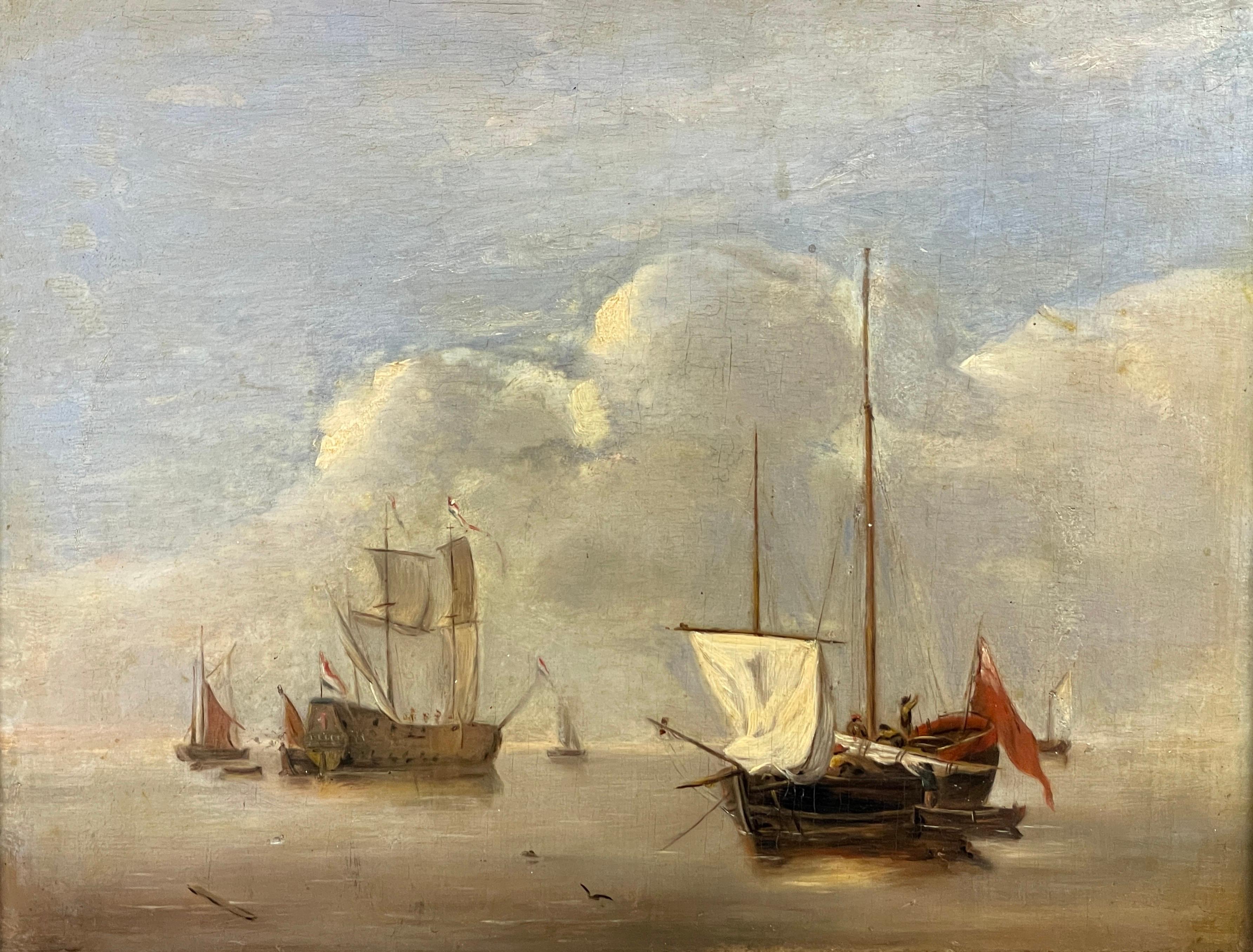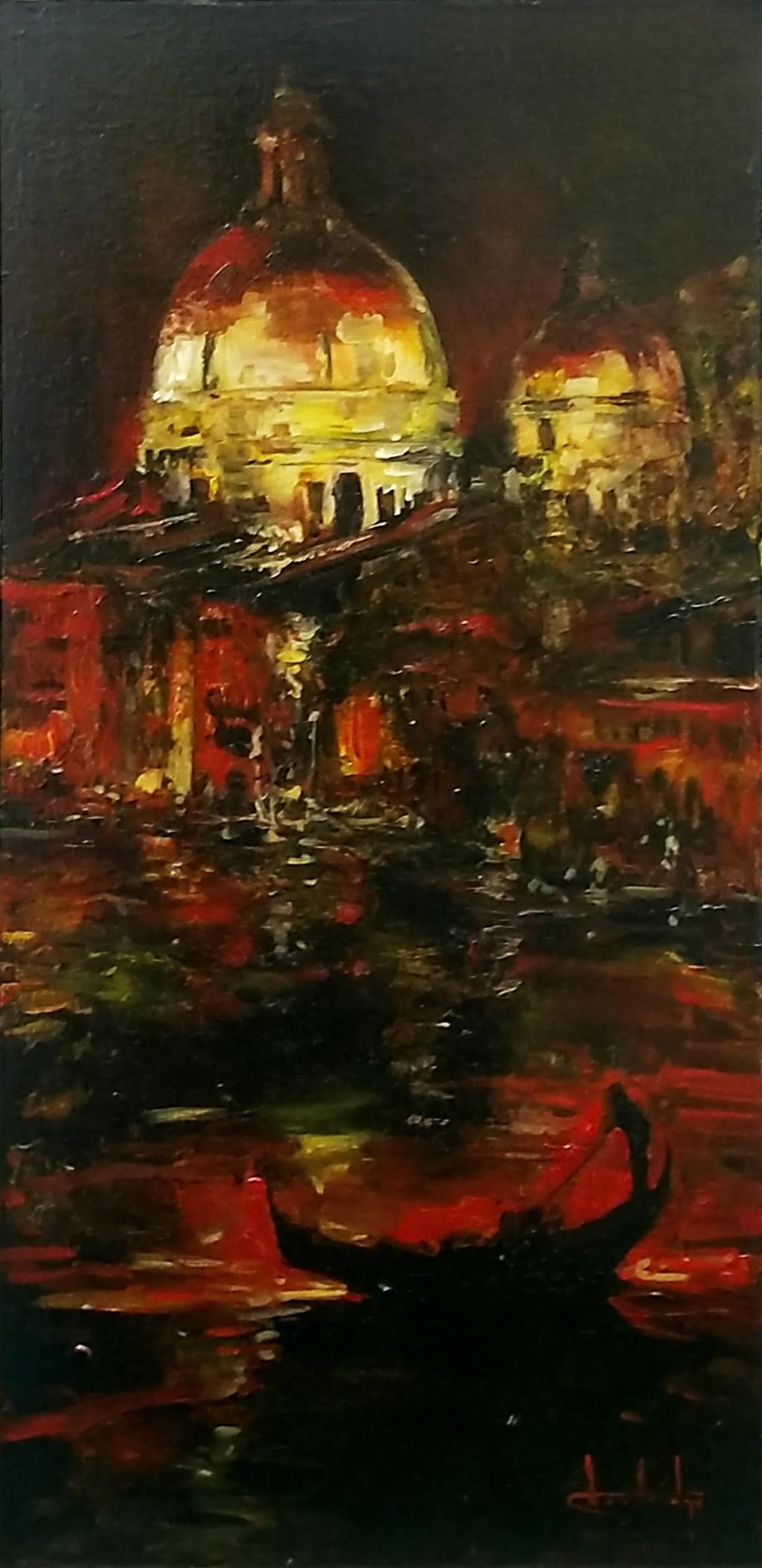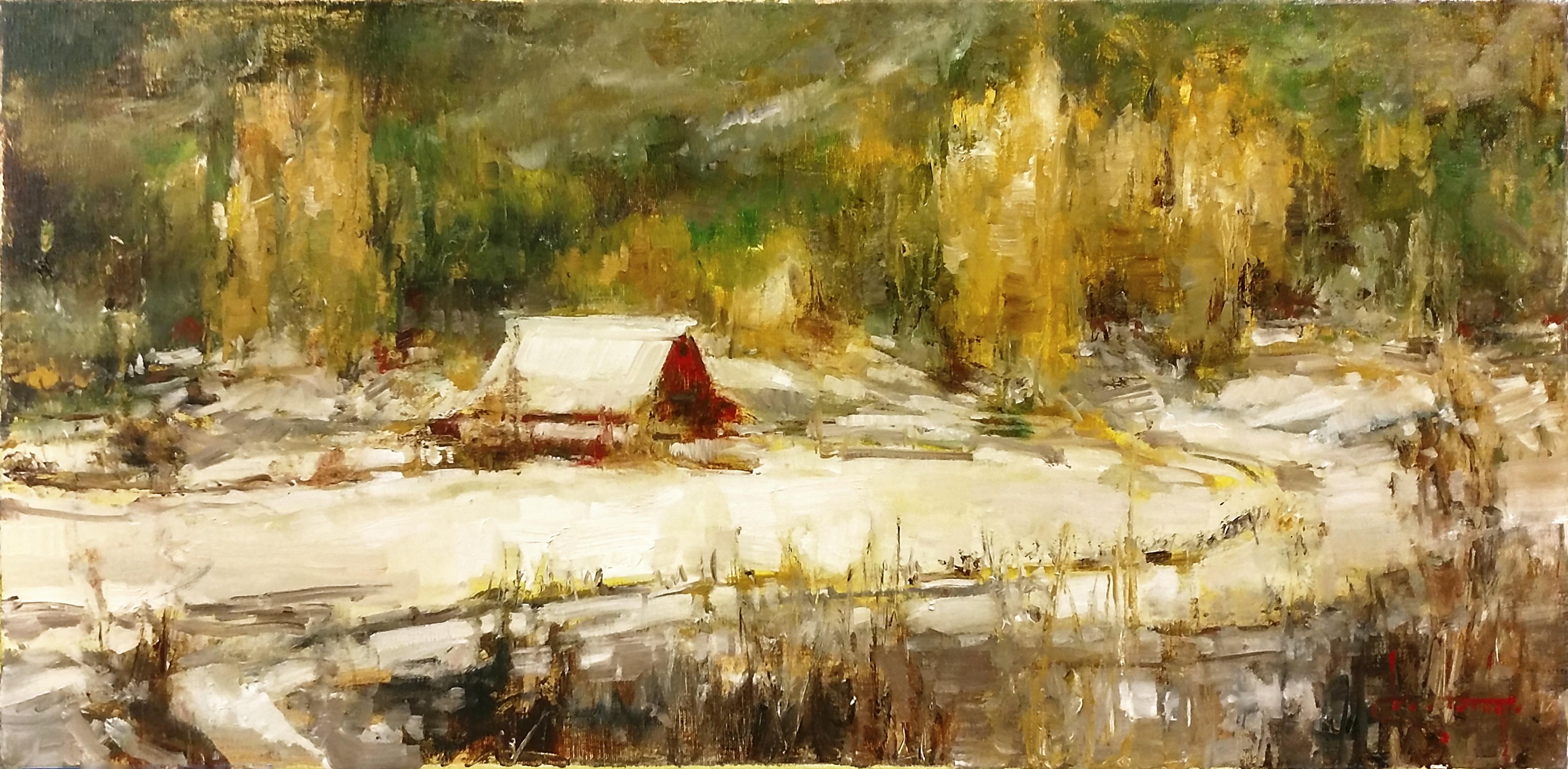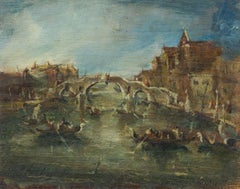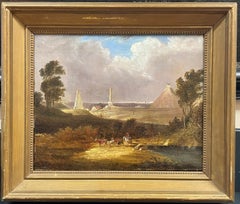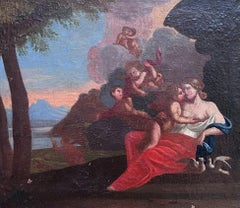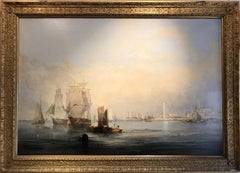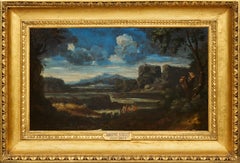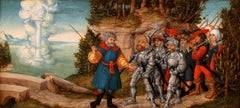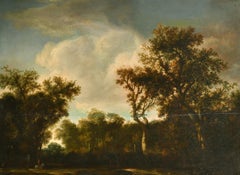
Fine 17th Century Dutch Old Master Oil on Panel Figure on Horseback in Woodland
View Similar Items
Want more images or videos?
Request additional images or videos from the seller
1 of 6
Auction endedBrowse Current Auctions
17th Century Dutch SchoolFine 17th Century Dutch Old Master Oil on Panel Figure on Horseback in Woodland17th century
17th century
About the Item
- Creator:17th Century Dutch School
- Creation Year:17th century
- Dimensions:Height: 14.5 in (36.83 cm)Width: 20.5 in (52.07 cm)Depth: 1 in (2.54 cm)
- Medium:
- Movement & Style:
- Period:
- Condition:
- Gallery Location:Cirencester, GB
- Reference Number:1stDibs: LU509310355642

About the Seller
5.0
Platinum Seller
These expertly vetted sellers are 1stDibs' most experienced sellers and are rated highest by our customers.
Established in 1989
1stDibs seller since 2016
3,433 sales on 1stDibs
Typical response time: 2 hours
More From This SellerView All
- Fine Antique Italian Oil Cannaregio Canal Venice Busy Figurative SceneLocated in Cirencester, GloucestershireView on the Cannaregio Canal, Venice Italian School, 19th century, after Francesco Guardi, Italian 1712-1793 oil on panel Painting: 8 x 10 inches condition: overall very sound, with ...Category
19th Century Old Masters Landscape Paintings
MaterialsOil
- Waterloo Battlefield with 3 Monuments - Butte du Lion, Antique Oil PaintingLocated in Cirencester, GloucestershireThe Battlefield of Waterloo English School, 19th century original oil painting on canvas, framed canvas: 12 x 15.5 inches framed: 17.5 x 20.5 inches condition: overall very good and presentable, some former restoration and signs of retouching visible. provenance: from a private collection A very rare and historically important early painting, depicting the Waterloo battle...Category
Early 19th Century Old Masters Landscape Paintings
MaterialsCanvas, Oil
- Fine 17th Century French Old Master Oil Painting Nude Lady Doves & CherubsLocated in Cirencester, GloucestershireMythological Figures in Classical Sunset Landscape French School, 17th century oil on canvas, framed framed: 20 x 23.5 painting: 13.5 x 17 inches provenance: private collection, Engl...Category
17th Century Old Masters Figurative Paintings
MaterialsOil
- 17th Century Dutch Flemish Old Master Oil on Panel Figures Grape HarvestLocated in Cirencester, GloucestershireThe Grape Harvest Flemish/ Dutch School, 17th century oil on wood panel panel: 13 x 16 inches provenance: private collection, Belgium condition: very good and sound conditionCategory
17th Century Old Masters Figurative Paintings
MaterialsOil
- Figures Chatting outside Village Tavern in Mountain Landscape, Period OilBy 19th century Dutch or Flemish schoolLocated in Cirencester, GloucestershireDutch/ Flemish School, early 1800's oil on canvas, framed framed: 19 x 24 inches canvas: 13.5 x 18.5 inches provenance: private collection, France condition: good and sound condition...Category
Early 19th Century Old Masters Landscape Paintings
MaterialsCanvas, Oil
- Antique Dutch Oil Painting Figures at Sunset by Coastal Estuary with BuildingsLocated in Cirencester, GloucestershireA River Landscape With A Figure On A Donkey 1800's Dutch School oil painting on canvas, framed framed: 21 x 27 inches canvas: 18 x 24 inches provenance: private collection, England ...Category
Early 19th Century Old Masters Landscape Paintings
MaterialsCanvas, Oil
You May Also Like
- Grand 19th Century English Marine Painting in Stunning LightBy John Wilson EwbankLocated in London, GBJohn Wilson Ewbank (1799 - 1847) Shipping in the Harbour, South Shields Oil on canvas 39.5 x 58 inches unframed 47.75 x 66.5 inches framed Provenance: Christie's October 2002; Lot 11. Fine Art Society; Private Collection This marvellous up to scale Ewbank is full of light and warmth and almost certainly his greatest work of the sort rarely - if ever - seen on the market. John W. Ewbank (4 May 1799–28 November 1847), was an English-born landscape and marine painter largely operational from Scotland. The Humber river is a large tidal estuary on the east coast of Northern England. Life Ewbank was born at Darlington on 4 May 1799, the son of Michael Ewbank, an innkeeper. He was adopted as a child by a wealthy uncle who lived at Wycliffe, on the banks of the River Tees, in the North Riding of Yorkshire. Intended for the Roman Catholic priesthood, he was sent to Ushaw College, from which he absconded. In 1813 Ewbank was apprenticed to Thomas Coulson, an ornamental painter in Newcastle. In around 1816 he moved with Coulson to Edinburgh, where he had some lessons with Alexander Nasmyth. He found work both as a painter and a teacher. He was nominated in 1830 one of the foundation members of the Royal Scottish Academy. In 1833 he is listed as living at 7 Union Street on the eastern fringe of the New Town in Edinburgh. Works His sketches from nature were especially admired, and a series of 51 drawings of Edinburgh by him were engraved by W. H. Lizars for James Browne's Picturesque Views of Edinburgh (1825). He also made a reputation with cabinet pictures of banks of rivers, coast scenes, and marine subjects. As an illustrator he illustrated some early editions of Scott's Waverley Novels and one edition of Gilbert White...Category
19th Century Old Masters Figurative Paintings
MaterialsOil
$186,149Free Shipping - Italian Landscape with Jack Players, a painting by Gaspard Dughet (1615 - 1675)By Gaspard DughetLocated in PARIS, FRHere Gaspard Dughet offers us an idyllic vision of the Roman countryside. The stages follow one another in a perfectly structured composition, revealing here a lake, there travellers walking along, gradually leading our eye to the blue horizon. But behind its classical composition, this landscape is particularly interesting because of three anthropomorphic details that the artist has hidden, opening the way to a radically different interpretation... 1. Gaspard Dughet, a landscape artist in the light of Poussin Gaspard Dughet was born on June 4th, 1615 in Rome where his father, of French origin, was a pastry cook. He was probably named Gaspard in honour of his godfather Baron Gaspard de Morant, who was, or may have been, his father's employer. His older sister Jeanne married the painter Nicolas Poussin (1594 - 1655) on September 1st, 1630. The young Gaspard was apprenticed with his brother-in-law at the beginning of 1631, which led his entourage to name him Gaspard Poussin. The first preserved works of the painter date from the years 1633-1634 and were painted in Poussin’s studio. Around 1635, Gaspard Dughet became emancipated and began to frequent the Bamboccianti circle. In 1636, he became friends with the painter Jean Miel (1599 - 1656), but also with Pier Francesco Mola (1612 - 1666) and Pietro da Cortona (1596 - 1669). This was also the time of his first trips throughout Italy. The painter, although of French origin, appears never to have visited France. In 1646 he settled permanently in Rome. A recognized painter with a solid book of orders, he remained faithful to landscape painting throughout his life, alternating between cabinet paintings and large decorative commissions, using both oil and fresco. Nailed to his bed by rheumatic fever at the age of 58, he died on May 25, 1675. 2. Discovering an idealized landscape Beyond a relatively dark foreground that takes us into the landscape, we discover a vast bluish horizon: a plateau surrounded by deep ravines advances to the right, overhanging an expanse of water that sparkles below. A road winds through a mountainous mass as if leading us to the fortress that crowns it; another town appears in the distance at the foot of three conical mountains. The composition is rigorous, mineral, and structured by geometric volumes. The various stages in the landscape lead one to the next attracting the eye towards the horizon located in the middle of the canvas. The general impression is that of a welcoming and serene nature. In many places the paint layer has shrunk, or become transparent, revealing the dark red preparation with which the canvas was covered and accentuating the contrasts. Human presence is limited to three jack players, leaning against a mound in the foreground. Their long garments, which may evoke Roman togas, contribute to the timelessness of the scene. Close examination of the canvas reveals two other travellers on the path winding between the rocks. Made tiny by the distance, their introduction in the middle register, typical of Dughet's art, lengthens the perspective. While it is difficult to date the work of a painter who devoted his entire life to the representation of landscapes, it is certain that this painting is a work from his later years. The trees that occupied the foreground of his youthful compositions have been relegated to the sides, a stretch of water separates us from the arid mountains counterbalanced by two trees represented on the opposite bank. The introduction of this stretch of water in the middle of the landscape betrays the influence of the Bolognese and in particular of the Dominiquin (1581 - 1641) A number of similarities with a drawing in the British Museum might suggest a date around 1656-1657, since, according to Marie-Nicole Boisclair , it has been compared with the Prado's Landscape with the Repentant Magdalene, painted at that period. 3. Three amazing anthropomorphic details While some late Renaissance landscapes offer a radical double reading, allowing one to see both a face or a human body behind the representation of a landscape, it seems interesting to us to hypothesize that Gaspard Dughet had fun here by slipping in a few details that, taken in isolation, evoke human or animal figures. We will give three examples, looking closely at a cloud, the trunk of a broken tree and the top of a cliff. The main cloud could thus evoke a Christ-like face or that of an antique god...Category
1650s Old Masters Landscape Paintings
MaterialsOil
- Moses and the Pillar of Cloud by Lucas Cranach the Elder and StudioBy Lucas Cranach the ElderLocated in New Orleans, LALucas Cranach the Elder and Studio 1472-1553 German Moses and the Pillar of Cloud Oil on panel Moses and the Pillar of Cloud is a bold and evocative composition that showcases the signature intense color and intricate detail of Lucas Cranach the Elder’s celebrated oeuvre. The remarkable 16th-century oil on panel by Lucas Cranach and his studio captures the narrative moment when Moses leads the Israelites out of Egypt and encounters God manifested through a large pillar of cloud. Moses stands at the precipice of a bridge and turns back to soldiers helping to lead the group of Israelites who huddle closely together. Cranach depicts Moses with his traditional iconography, rendering the rays of light on his head which came to be interpreted as "horns" in the translation of the Bible. Using his traditional walking staff, Moses gestures toward the pillar, seemingly acknowledging that God will protect the group as they cross the bridge to the other side, leaving exile and entering a promised land. In a nod to Cranach’s Germanic locale, he renders the figures and setting in a manner that feels decisively more akin to European aesthetics than those of the Red Sea. Soldiers wear elaborate, gothic suits of armor that recall the livery of Northern European guardsmen. The terrain appears more like a European forest giving way to a sweeping valley than the arid landscape the Israelites trekked through on their journey across the Red Sea. Though still clearly recounting a story from the Old Testament, Cranach renders the cast of characters and setting in an earthly, familiar manner. This aesthetic shift speaks to Cranach’s own changing beliefs as he found himself at the center of the Protestant Reformation. After first gaining recognition in 1505 as the official painter of Frederick the Wise, Cranach established a thriving painting and print studio in Wittenberg, Germany. Cranach was renowned for his court portraits and genre paintings and was also well known for his association with the famous protestant reformer Martin Luther, then under the protection of Frederick the Wise. As Wittenberg became a bastion of new religious thought, Cranach soon befriended Luther and played an active role in creating the printed materials that proliferated throughout the Reformation...Category
16th Century Old Masters Figurative Paintings
MaterialsOil, Panel
- The Adoration of the Magi by Joseph van BredaelLocated in New Orleans, LAJoseph van Bredael 1688-1739 Flemish The Adoration of the Magi Oil on copper Painted on copper and exhibiting an exquisite luminosity, this exceptional painting...Category
Late 17th Century Old Masters Figurative Paintings
MaterialsCopper
- Large 17th century religious family painting - Mary with Christ and AnnaLocated in Antwerp, BE17th century Old Master painting depicting the Infant Christ with Mary and St. Anne attributed to Nicolas de Liemaker The artist of the present work wonderfully captured the loving gaze of Maria, looking in awe at her child. One can sense the tenderness and love in her eyes. The eyes of Christ appears to be filled with wisdom and love and a finely painted aura crowns his and his mother's heads. St. Anne, Mary's mother, gently holds the infant whilst gazing adoringly at him. The painting is not only a beautiful depiction of Christ and his mother and grandmother, but also a sweet image of the tender bond between a mother's and their children. The vibrant and soft colours of the fabric create a soft cocoon around the figures and seem to further emphasis the beauty and importance of the depicted scenery and its protagonists. Nicolaas de Liemaecker (also spelled as Liemaker or Liemackere) was a Flemish painter born in Ghent in 1601. He was also known under the name Nicolaas Roose. His father was Jacobus de Liemaecker, a painter upon glass. Nicolaas is reported to have been trained by his father and Gaspard de Crayer II (1), an apprenticeship with Otto Van Veen has also been suggested. In 1624 he worked at the Court of the Bishop of Paderborn and for Ferdinand of Bavaria. He later returned to his native city, where he focused on religious and historical paintings. He was a very accomplished and celebrated artist who attained a high rank in his profession. He witnessed the baptisms of Pieter and Janne-Marie Van Hulle...Category
17th Century Old Masters Figurative Paintings
MaterialsOil, Canvas
$15,313 Sale Price20% Off - Flemish 17th c., Allegory of war and peace, circa 1630, by Adriaen van StalbemtLocated in PARIS, FRAdriaen van Stalbemt (Antwerp, 1580-1662) Allegory of Peace and War, circa 1620-1630 Oil on oak panel: h. 49.5 cm, l. 73.2cm (19.29 x 28.74 in) Giltwood frame with laurel leaves, Lo...Category
Early 17th Century Old Masters Figurative Paintings
MaterialsOil, Panel
Recently Viewed
View AllMore Ways To Browse
Antique Salon
Antique Salons
Salon Antique
French Impressionist Framed Art
Impressionist Painting City
1950s French Art
Home Dior
Paintings Scenes Of Italy
Old Painting France
Gray Matters
Landscape In Spring
French Old Frame
Seascape Painting
Framed Sketches
Gallery Russia
Early California Paintings
Painting Of Clouds
Impressionist Oil Paintings Of Paris
